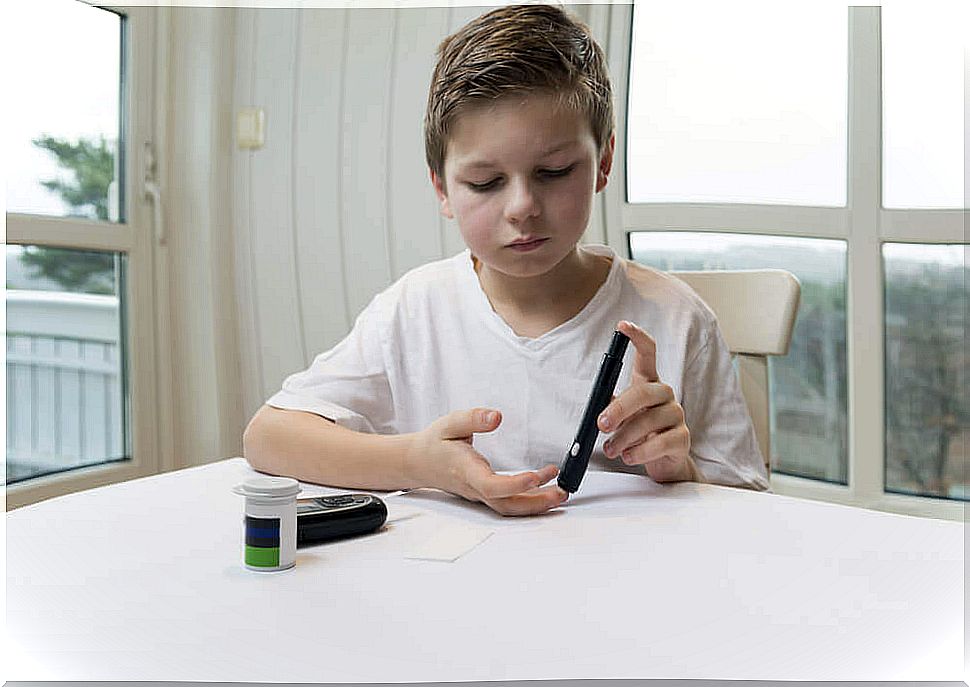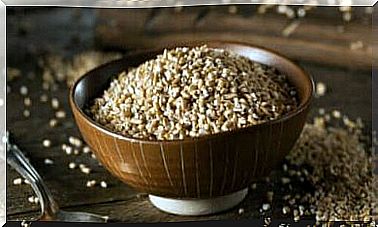Diabetes In Children: How To Treat It

Diabetes in children is a chronic disease that is characterized by increased blood sugar levels. The most common in this population is type 1 diabetes, which occurs when the pancreas fails to produce the insulin needed to use glucose.
However, to a lesser extent, they can also develop type 2 diabetes, which happens when insulin is produced, but this is not enough, or the body cannot use it properly. What are your triggers? How can you fight it?
Resolving these issues is very important for all parents. In fact, it is convenient to know how this manifests itself, as many of its signs are ignored. Below we share the most relevant aspects, and several tips for your treatment.
Causes of Diabetes in Children
So far there is no exact cause to explain diabetes in children. However, as with other chronic conditions, it is the result of genetic, environmental, or biological factors. A child is at increased risk of getting diabetes if:
- Has a family history of diabetes.
- It has an unhealthy diet, rich in sugars and flour.
- Suffering from overweight or obesity.
- Leads a sedentary lifestyle.
- It has low levels of vitamin D.
Symptoms of Diabetes in Children

The clinical manifestations of diabetes in children are usually notorious between the ages of five and seven, and during puberty. It is essential to identify them and request medical tests, as they are sometimes confused with other common illnesses. The symptoms are:
- Constant thirsty feeling
- Changes in urination habits (need to urinate frequently)
- Urine losses during rest (wetting the bed)
- constant hunger
- Physical weakness and tiredness
- Irritability (in young children)
- Blurred vision
- Constant fungal infections
- muscle cramps
- Unexplained Weight Loss
How to Treat Diabetes in Children
When a doctor has reason to suspect diabetes in children, he or she will confirm the diagnosis through a blood test and oral glucose tolerance tests. Once the illness is confirmed, the child should have regular check-ups.
Treatment for type 1 diabetes is based on the application of insulin injections, with doses adapted to each patient. There should also be a blood glucose control plan. If it’s type 2 diabetes, diet and exercise can help regulate it.
It is very important to prevent and treat being overweight as it is a risk factor for diabetes and other complications. Consequently, regardless of the case, it is essential to improve the lifestyle. Here are some help tips.
Breast-feeding

The first recommendation to prevent diabetes in children is to feed them with breast milk in their first six months of life. While formula milk can help in certain cases, some contain unnecessary sugars at this age.
Provide children with water
To control and prevent diabetes, it is essential to encourage good water consumption habits. This hydrating drink helps to detoxify the body, and prevents changes in metabolism.
- Natural water is the best option to replace sugary drinks.
Increase fruits and vegetables
Diet to fight diabetes in children may vary in each case. However, it is generally recommended to increase your intake of fruits and vegetables, which represent a significant source of essential nutrients.
Its contribution of dietary fiber, antioxidants, vitamins, and minerals helps optimize glucose usage. It also strengthens the functions of the immune system, and decreases the risk of infections and more serious illnesses.
give them whole grains
Even though dietary carbohydrates should be moderated, consuming whole grains is very beneficial. Due to dietary fiber intake, these improve digestion and prolong satiety. At the same time they increase energy, and help the metabolism to work faster.
Among the healthiest options, we find:
- Oat
- Barley
- Rye
- Brown rice
- Buckwheat or Buckwheat
- Corn
encourage sport
One of the best supports for the treatment of childhood diabetes is physical exercise. Therefore, when the diagnosis is positive, the health professional suggests encouraging any type of sports activity in the child. Some activities can be:
- Play soccer
- Practice swimming
- walk or run
- Jump rope
- play outdoor games
- go to dance lessons
in short









